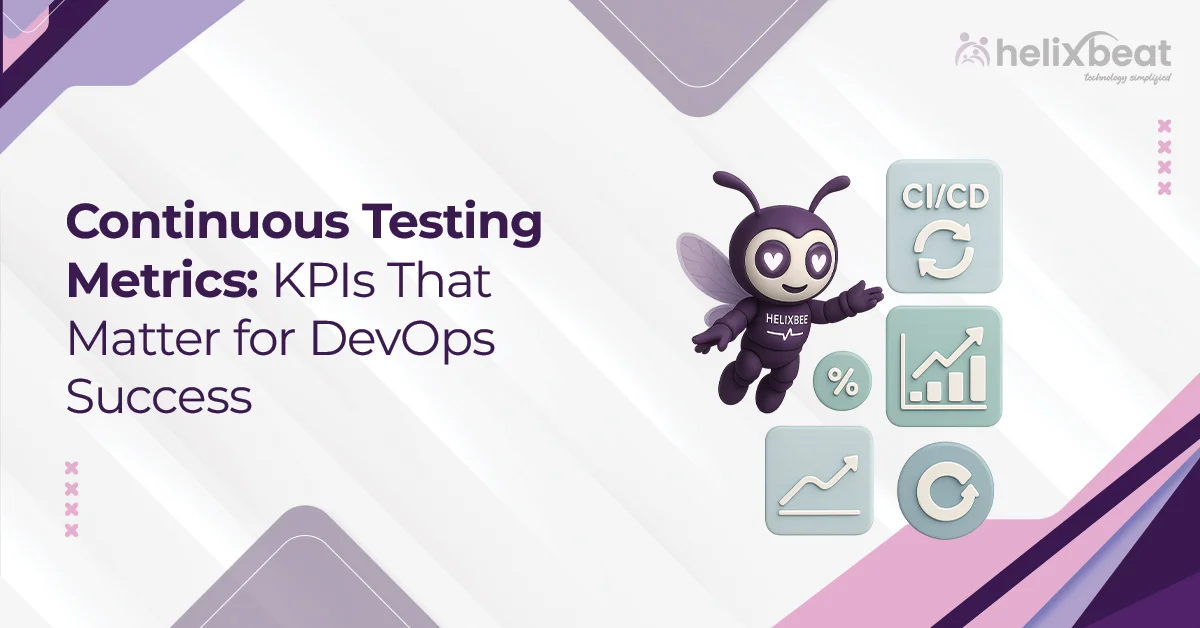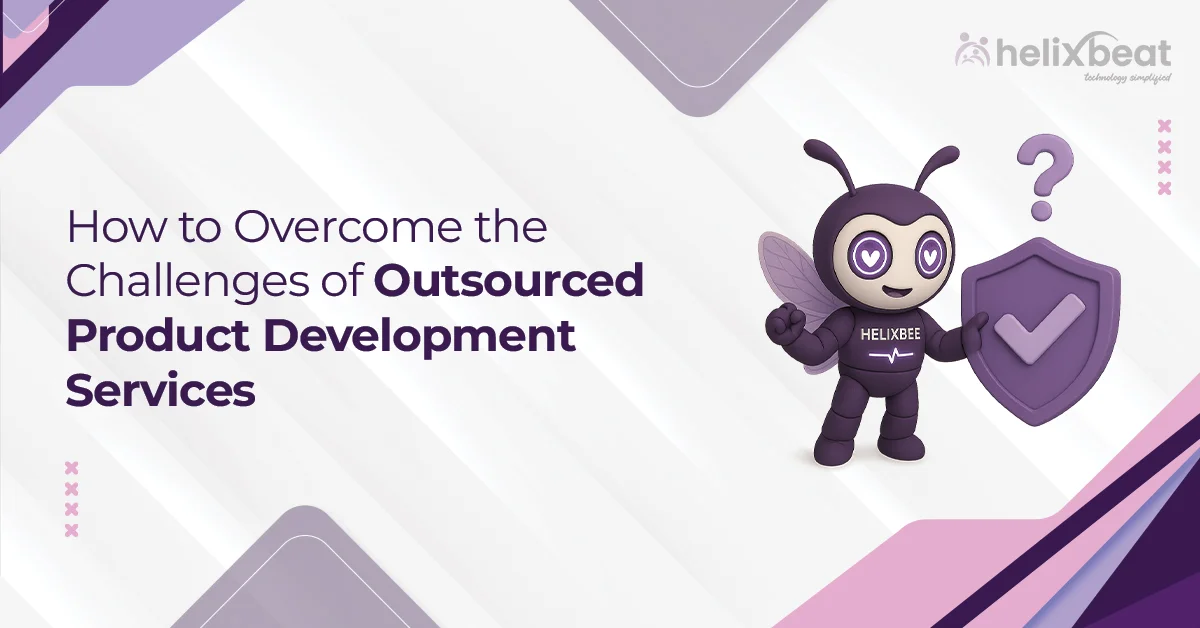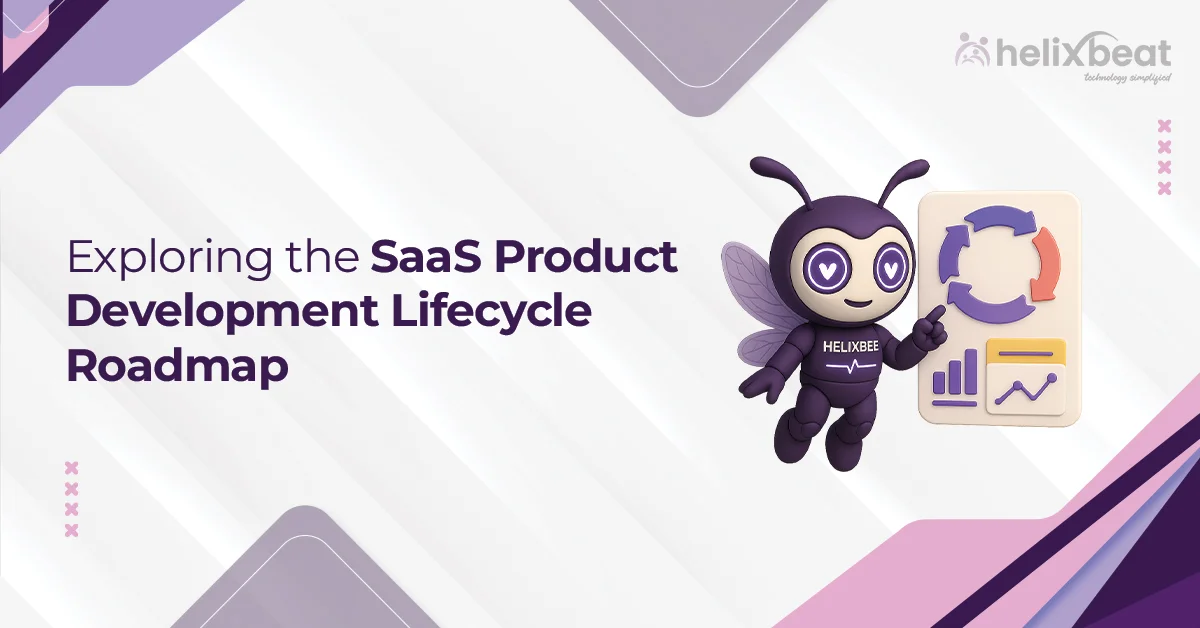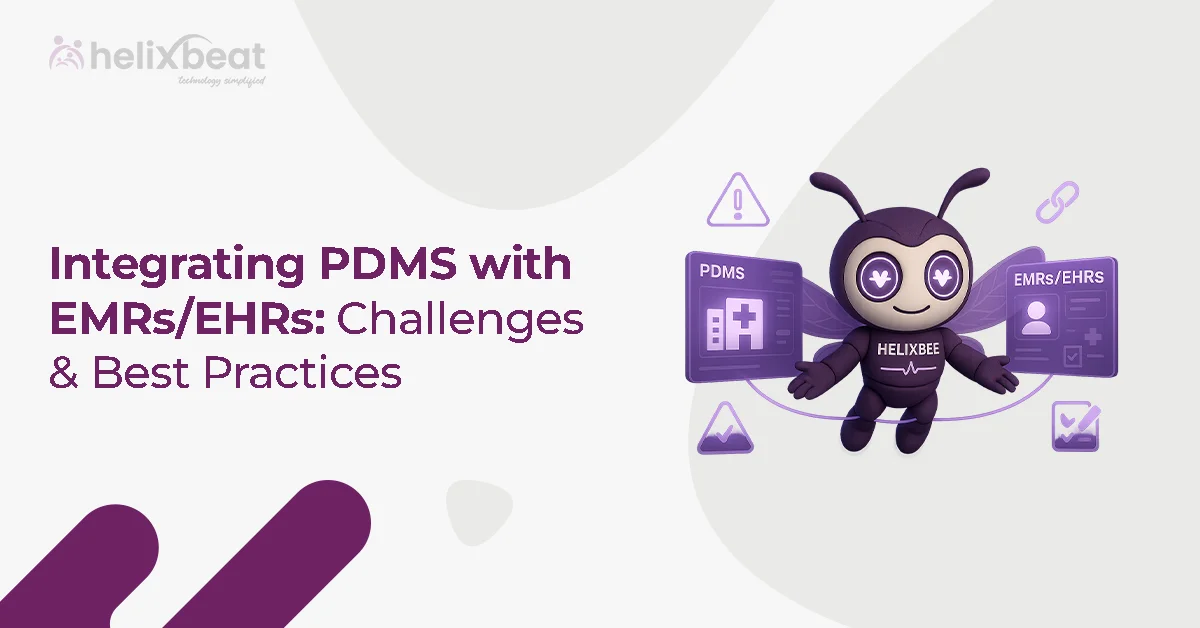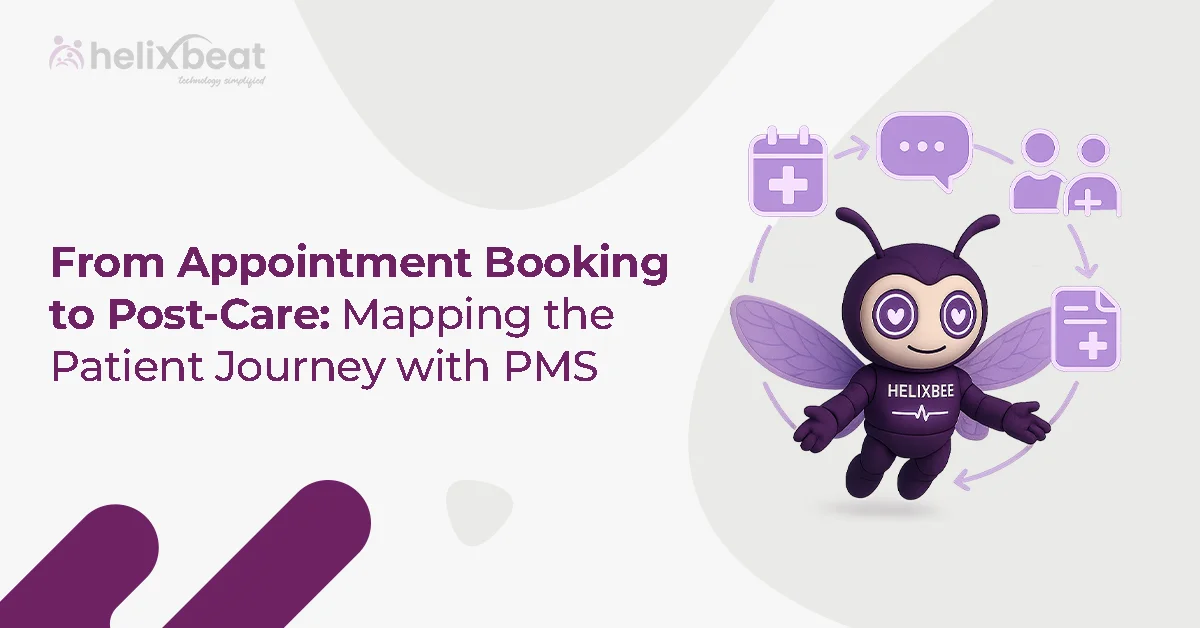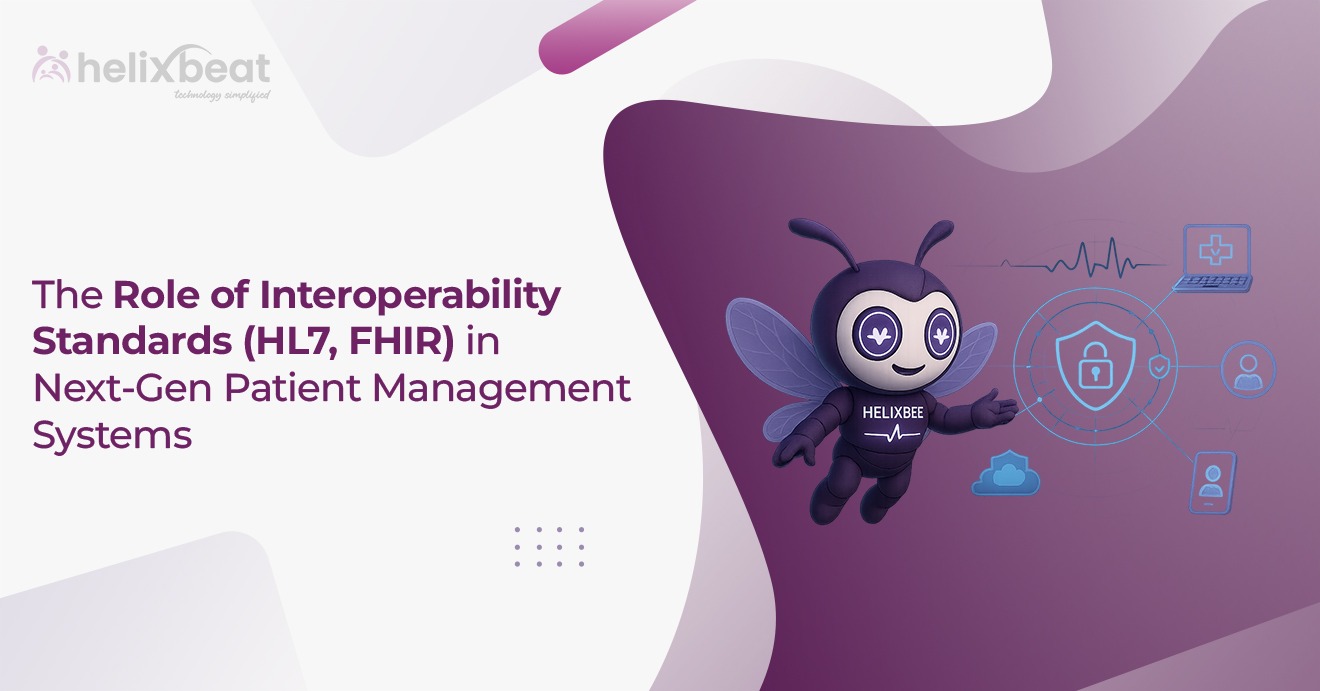Continuous testing is crucial for DevOps teams, helping them release software faster without sacrificing quality. A Forrester study reveals that high-performing DevOps teams deploy code 30 times more frequently than others, with a 50% lower failure rate. This statistic shows how important it is to integrate testing throughout the development process.
However, many teams struggle with measuring the effectiveness of their testing efforts. Without clear key performance indicators (KPIs), it’s difficult to pinpoint areas that need improvement. The solution lies in tracking the right metrics to gauge success. By focusing on KPIs, DevOps teams can improve quality, reduce cycle time, and enhance overall performance.
Here, we will explain the essential KPIs, tools, and how continuous testing services can optimize your DevOps outcomes.

Table of Contents
Understand Continuous Testing in DevOps?
Continuous testing in DevOps refers to the process of continuously evaluating and validating the quality of software throughout the entire development lifecycle. Unlike traditional testing, which happens at specific stages, continuous testing ensures that tests are automated and run frequently during each phase of development, from coding to deployment.
This approach allows for immediate feedback on code changes, helping developers identify and fix issues as soon as they arise. By integrating continuous testing within the DevOps pipeline, teams can maintain high-quality software while accelerating delivery, ensuring a seamless workflow with minimal disruptions.
Why KPIs are Important in Continuous Testing
Continuous testing plays an important part in maintaining high-quality software and ensuring smooth DevOps workflows. Here’s why tracking key performance indicators (KPIs) is essential for its success:
1. Identify Testing Effectiveness
KPIs help measure how well your testing process is performing. By tracking metrics like test coverage and defect density, teams can identify whether their tests are comprehensive enough and whether they are catching issues early.
2. Improve Speed and Efficiency
With KPIs, teams can monitor how quickly tests are executed and how often failures occur. This helps identify areas where testing can be sped up or optimized, ensuring faster development cycles.
3. Make Sure Consistency Across Releases
By consistently tracking KPIs, teams can maintain a steady level of quality in each software release. It helps in identifying any sudden drops in performance or quality, allowing teams to act quickly to restore standards.
4. Data-Driven Decision Making
KPIs provide objective data that can guide decisions. Instead of relying on assumptions, teams can use real-time metrics to make informed choices about where to focus their testing efforts or improve processes.
5 Important Continuous Testing Metrics That Lead DevOps Success
1. Test Coverage
Test coverage is a critical metric in continuous testing as it measures the percentage of your application that is tested through automated tests. Higher test coverage indicates that more parts of the code are being validated, reducing the chances of bugs slipping through.
Continuous testing ensures that tests are executed across different layers of the application, from unit tests to integration and end-to-end tests. However, it’s important to balance coverage with efficiency; over-testing certain areas can slow down the pipeline, while under-testing can leave critical areas vulnerable to defects.
2. Defect Density
Defect density measures the number of defects identified per unit of code, typically per thousand lines of code (KLOC). This metric provides insight into the quality of the code and testing process. A higher defect density can signal areas of the code that need more rigorous testing or refactoring.
By continuously tracking defect density, DevOps teams can identify patterns in which parts of the application are more prone to errors and take proactive steps to address underlying issues, improving overall code quality.
3. Test Execution Time
Test execution time refers to how long it takes for the automated tests to run and return results. This metric is particularly important for maintaining fast feedback loops in continuous testing. Long execution times can slow down the CI/CD pipeline and delay deployment.
By monitoring test execution time, DevOps teams can identify bottlenecks in the testing process, such as inefficient tests or infrastructure limitations. Optimizing test execution time through parallel testing, better resource allocation, or test prioritization ensures that testing remains an enabler of speed, not a hindrance.
4. Mean Time to Detect (MTTD)
Mean Time to Detect (MTTD) measures the average time it takes to detect a defect after it’s introduced into the system. Shorter MTTD is crucial in continuous testing, as it enables faster responses to issues and prevents them from affecting downstream stages of the development process.
Continuous testing tools integrated with real-time monitoring and logging can help reduce MTTD by providing instant feedback to developers, making it easier to identify and fix problems quickly. This helps improve the overall stability and reliability of the application, especially in fast-moving DevOps environments.
5. Test Failure Rate
Test failure rate tracks the percentage of tests that fail in each testing cycle. A high failure rate can indicate underlying problems with the codebase or testing environment, potentially affecting the stability of the release. Continuous testing metrics like this help teams pinpoint whether issues are related to specific code changes, test configurations, or environment inconsistencies.
Monitoring and reducing the test failure rate over time contributes to smoother and more reliable releases, while also driving continuous improvements in both code quality and test effectiveness.
Continuous Testing Tools That Support These KPIs
To track and optimize KPIs in continuous testing, the right tools are essential. These tools automate tests, provide insights into performance, and help improve testing efficiency. Here’s how popular continuous testing tools support key KPIs:
1. Selenium
Selenium automates web application testing, enhancing Test Coverage and Test Execution Time by running tests across different browsers. It integrates with reporting tools to monitor Defect Density and Test Failure Rates in real time.
2. JUnit
JUnit is ideal for unit tests in Java, increasing defect density and test execution time by providing immediate feedback in CI pipelines. It helps reduce manual testing and improves defect detection.
3. Jenkins
Jenkins automates CI/CD workflows, helping track test execution time and MTTD by running tests automatically after every commit. It integrates with various tools to monitor failures and streamline testing.
4. TestNG
TestNG supports test execution time and test failure rate by enabling parallel test execution and advanced configurations. It accelerates testing and provides detailed reporting on test failures.
5. Apache JMeter
JMeter is used for performance testing, supporting defect density by identifying scalability issues. It integrates with Jenkins for continuous performance monitoring, ensuring early detection of defects.
How Continuous Testing Services Help Optimize DevOps Outcomes
Continuous testing services play a crucial role in optimizing DevOps outcomes by integrating automated testing throughout the development pipeline. These services provide real-time feedback on code changes, enabling teams to catch defects early and reduce the cost of fixing issues later.
By offering expertise in test automation, test execution, and performance monitoring, continuous testing services help DevOps teams streamline their workflows, accelerate release cycles, and maintain high-quality standards. They make sure seamless integration with CI/CD tools, improve collaboration between developers and testers, and provide comprehensive reporting to track key performance indicators (KPIs), ultimately leading to faster deployments and more reliable software.
Final Thoughts
Continuous testing is a game-changer for DevOps teams, ensuring faster, more reliable software releases without compromising quality. By tracking the right KPIs, optimizing test coverage, and utilizing powerful testing tools, teams can streamline their processes and quickly detect issues.
Helixbeat offers expert continuous testing services that integrate easily into your DevOps pipeline, helping you achieve efficient testing, quicker feedback, and ultimately, better software outcomes. With Helixbeat’s support, you can take your DevOps practices to the next level, delivering high-quality software. Get a Free DevOps Testing Audit.
FAQ:
1. Name three continuous testing tools in DevOps.
- Selenium: An open-source tool for automating web application testing across different browsers.
- JUnit: A popular testing framework for Java applications that integrates well with CI/CD pipelines.
- Jenkins: A continuous integration tool that automates the testing process by triggering tests after each code commit.
2. What is continuous testing in software testing?
Continuous testing is an approach where tests are automated and run throughout the software development lifecycle. It ensures that the software is continuously evaluated for quality, with real-time feedback provided to developers. This helps identify defects early, reducing risks and improving the speed of delivery.
3. How does continuous testing differ from traditional testing?
Unlike traditional testing, which typically happens at specific stages (usually at the end of the development cycle), continuous testing runs automated tests throughout the entire development process. It integrates with CI/CD pipelines, enabling real-time feedback on code changes, which helps catch issues earlier, leading to faster, more efficient releases.
4. How does continuous testing improve software quality?
Continuous testing improves software quality by providing ongoing, automated feedback on the application’s performance and functionality. It helps identify bugs and defects early in the development cycle, reducing the cost of fixing issues later. Continuous testing also ensures comprehensive test coverage, including unit, integration, and end-to-end tests, leading to higher-quality, more reliable software releases.
5. What is Continuous Testing for DevOps Professionals?
Continuous testing for DevOps professionals involves running automated tests throughout the CI/CD pipeline to quickly identify bugs, improve release speed, and ensure software quality. It enables faster feedback, smoother deployments, and better collaboration between development and operations teams.



